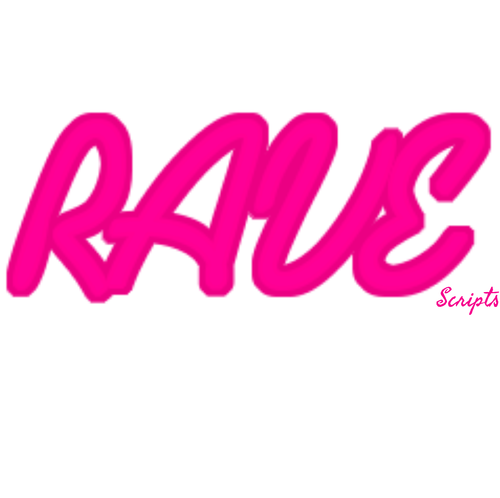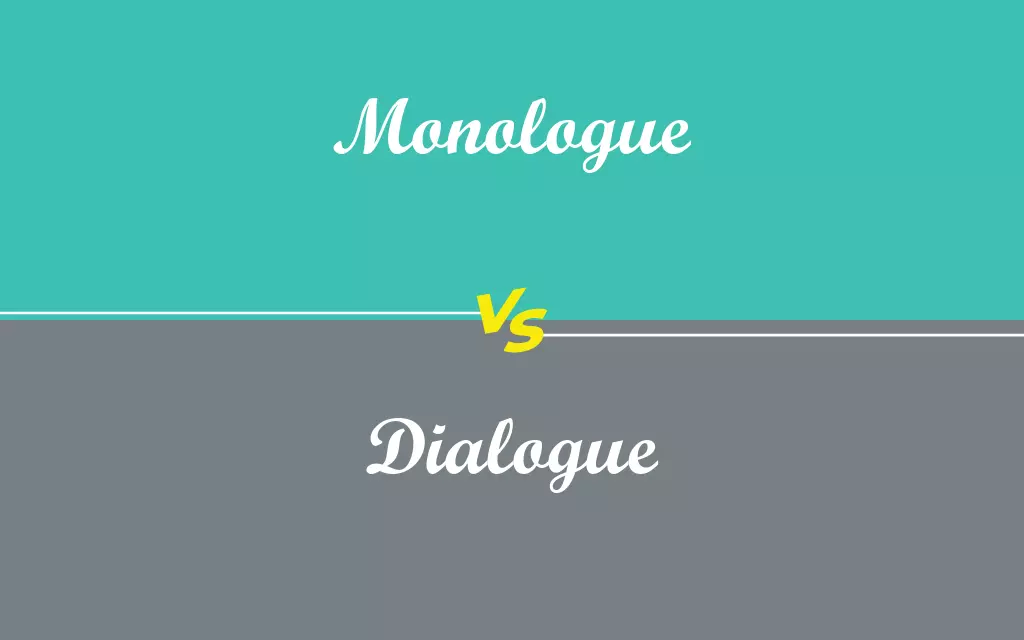In the realm of screenwriting, the art of storytelling is intricately woven through the power of words. Every word, every line of dialogue, holds the potential to captivate an audience, evoke emotions, and drive the narrative forward. Two essential elements that screenwriters employ to convey their characters’ thoughts, emotions, and motivations are monologues and dialogues. In this blog post, we embark on a journey to explore the dynamic interplay between monologue vs dialogue in screenwriting. We delve into their unique qualities, examine their respective strengths and weaknesses, and uncover the creative choices that shape the storytelling experience. Whether you’re a seasoned screenwriter seeking to master the art of character expression or an aspiring scribe curious about the nuanced differences between these narrative tools, prepare to delve into the heart of screenwriting as we unravel the captivating world of monologue versus dialogue.
Monologue vs Dialogue in Screenwriting: Unveiling the Art of Monologues
In the realm of screenwriting, the solitary voice of a character can hold a mesmerizing power over audiences. Monologues, the art of a character speaking their thoughts and emotions aloud, offer a unique opportunity to delve deep into a character’s psyche and reveal their innermost desires, fears, and revelations. This powerful narrative tool allows screenwriters to create moments of introspection, vulnerability, and self-reflection, captivating viewers with a raw and intimate connection to the character.
A well-crafted monologue has the ability to captivate and engage audiences in profound ways. It provides a platform for characters to express their desires, ambitions, or conflicts directly to the viewers, breaking the fourth wall and forging a personal connection. Through a monologue, a character’s backstory, motivations, or hidden truths can be unveiled, offering insights that might otherwise remain hidden within the narrative.
Monologues are often employed to emphasize a character’s journey of self-discovery or to convey pivotal moments of transformation. They can serve as poignant turning points in a story, highlighting emotional breakthroughs or shedding light on complex relationships. The power of a solitary voice in a monologue lies in its ability to convey a character’s unique perspective and evoke empathy or identification from the audience.
Crafting an impactful monologue requires a delicate balance between poetic language, emotional resonance, and narrative relevance. It is essential for screenwriters to consider the character’s voice, the tone of the story, and the overall narrative arc when constructing a monologue. Each word and phrase should be carefully chosen to evoke the intended emotions and deepen the audience’s connection to the character’s journey.
However, it is important to recognize that monologues also come with their own set of challenges. The risk of excessive exposition or didacticism can dampen the impact of a monologue, turning it into a mere information dump rather than a compelling moment of character revelation. Screenwriters must tread the fine line between providing necessary information and maintaining the dramatic tension within the scene.
When utilized effectively, the power of a solitary voice in a monologue can be transformative, leaving an indelible impact on the audience’s experience. It allows for introspection, emotional resonance, and a deepening of character exploration. By harnessing the art of monologues, screenwriters can create moments that resonate long after the story ends, forging a connection between characters and viewers that lingers in their hearts and minds.
Monologue vs Dialogue in Screenwriting: Crafting Compelling Dialogues
In the realm of screenwriting, dialogues breathe life into stories, giving voice to the characters that inhabit them. Conversations between characters have the power to drive the plot, reveal their personalities, and create dynamic interactions that captivate audiences. Crafting compelling dialogues requires a delicate balance of authenticity, subtext, and emotional resonance, enabling characters to engage in meaningful exchanges that propel the narrative forward.
Dialogues are the heartbeat of a screenplay, providing an avenue for characters to communicate their thoughts, emotions, and conflicts. Well-crafted dialogues should feel natural and true to each character’s unique voice, reflecting their backgrounds, motivations, and personality traits. They should spark intrigue, reveal hidden depths, and create tension that keeps viewers engaged.
Subtext is a powerful tool in crafting compelling dialogues. It involves layering underlying meanings beneath the surface conversation, allowing characters to say one thing while implying another. Subtext adds depth and complexity, inviting viewers to read between the lines and decipher the unsaid, leading to a richer and more nuanced understanding of the characters and their relationships.
Compelling dialogues also rely on effective pacing and rhythm. The back-and-forth exchange between characters should have a natural flow, mirroring real-life conversations while also serving the needs of the narrative. Varying the rhythm of dialogues, using pauses or interruptions, can create tension and add dynamic energy to the scenes.
An essential aspect of crafting compelling dialogues is knowing what to leave unsaid. Sometimes, the power lies in the silences, allowing viewers to infer emotions or intentions from the unspoken words. Leaving room for interpretation and ambiguity can heighten the dramatic impact, drawing audiences deeper into the story.
The best dialogues also serve a purpose beyond mere conversation. They reveal information, advance the plot, or provide crucial turning points in the story. Each line of dialogue should have intention and contribute to the overall narrative arc. Crafting compelling dialogues requires screenwriters to carefully consider the balance between realism, purpose, and the art of storytelling.
Monologue vs Dialogue in Screenwriting: Exploring the Strengths and Challenges of Monologues
Advantages:
- Deep Character Exploration: Monologues provide an opportunity for in-depth character exploration. They allow characters to express their innermost thoughts, desires, and vulnerabilities, providing valuable insights into their psyche and motivations.
- Emotional Impact: Well-written monologues have the potential to evoke strong emotions in the audience. By giving characters a moment to share their innermost feelings, monologues can create powerful emotional connections and resonate deeply with viewers.
- Showcasing Acting Skills: Monologues can serve as showcase moments for actors, providing them with the opportunity to display their range, depth, and acting prowess. A compelling monologue can leave a lasting impression and highlight an actor’s talent.
- Aesthetic and Poetic Language: Monologues allow screenwriters to utilize rich and poetic language, enhancing the artistic quality of the dialogue. This can create a captivating and immersive experience for the audience, adding depth and beauty to the storytelling.
Limitations:
- Risk of Exposition: Monologues can be prone to excessive exposition, where characters deliver information in a manner that feels contrived or unnatural. Balancing the need for exposition with maintaining a natural flow of dialogue is essential to avoid breaking the immersion for the audience.
- Lack of Interactivity: Monologues, by nature, involve a character speaking alone, limiting the opportunity for interplay and dynamic exchanges between characters. This can result in a loss of the back-and-forth dynamics that can bring dialogue scenes to life.
- Challenge of Sustaining Interest: Extended monologues run the risk of losing audience interest if they become overly long or repetitive. Maintaining a compelling narrative flow and keeping the audience engaged throughout a monologue requires careful pacing and variation in tone and content.
- Unrealistic Conversations: In certain contexts, monologues can feel unrealistic as people rarely engage in extended, uninterrupted speeches in real-life conversations. Monologues must be crafted in a way that feels organic and believable within the context of the story and the characters’ circumstances.
Monologue vs Dialogue in Screenwriting: Harnessing the Synergy of Monologues and Dialogues in Screenwriting
- Contrasting Perspectives: Monologues and dialogues can be strategically used to contrast different perspectives within a story. Monologues allow for individual character exploration and provide insights into their internal thoughts and emotions, while dialogues facilitate interactions and debates between characters, showcasing contrasting viewpoints and generating tension.
- Rhythm and Flow: The interplay between monologues and dialogues can create a rhythm and flow within a screenplay. Alternating between moments of introspection and moments of dynamic conversation can enhance the pacing and keep the audience engaged, maintaining a balanced and captivating storytelling experience.
- Revealing Subtext: Combining monologues and dialogues can be a powerful way to reveal subtext. Characters may express their true feelings through a monologue, while their interactions in dialogues may be layered with hidden meanings and unspoken tensions. This interplay adds depth and complexity to the storytelling, allowing for deeper exploration of character dynamics.
- Building Relationships: Dialogues provide opportunities for characters to develop relationships, while monologues can deepen our understanding of individual characters. By skillfully integrating both forms of communication, screenwriters can build complex and multifaceted relationships that evolve and transform throughout the narrative, enriching the overall story arc.
- Enhancing Dramatic Tension: Strategic use of monologues and dialogues can heighten dramatic tension. Monologues can create moments of anticipation, building up to a pivotal reveal or emotional climax. Dialogues, on the other hand, allow for immediate responses, conflict, and dramatic confrontations, intensifying the stakes and driving the narrative forward.
- Balancing Engagement and Exposition: The interplay between monologues and dialogues can help balance engagement and exposition. Dialogues provide opportunities for organic information exchange, while monologues can be used to delve deeper into character backstory or thematic exploration. By blending these elements, screenwriters can provide necessary exposition without sacrificing engagement or pacing.
Understanding the dynamic interplay between monologues and dialogues allows screenwriters to harness the synergy of these narrative tools. By strategically integrating these forms of communication, screenwriters can create layered, dynamic, and compelling storytelling experiences that immerse audiences in the characters’ world and enhance the overall impact of the screenplay.
Related:


Leave a Reply